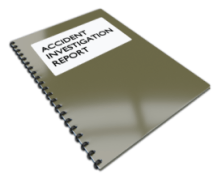Communication Flows in an Organization
April 3, 2025
 Communication Flows in an Organization
Communication Flows in an Organization
In an organization, communication flows in 5 main directions- Downward Upward Lateral Diagonal External Downward Flow of Communication: Communication that flows from a higher level in an organization to a lower level is a downward communication. In other words, communication from superiors to subordinates in a chain of command is a downward communication. This communication…
 Communication Barriers – Reasons for Communication Breakdown
Communication Barriers – Reasons for Communication Breakdown
Communication is a process beginning with a sender who encodes the message and passes it through some channel to the receiver who decodes the message. Communication is fruitful if and only if the messages sent by the sender is interpreted with same meaning by the receiver. If any kind of disturbance blocks any step of…
 Components of Communication Process
Components of Communication Process
Communication is a process of exchanging verbal and non verbal messages. It is a continuous process. Pre-requisite of communication is a message. This message must be conveyed through some medium to the recipient. It is essential that this message must be understood by the recipient in same terms as intended by the sender. He must…
A report can be defined as a testimonial or account of some happening. It is purely based on observation and analysis.
A report gives an explanation of any circumstance. In today’s corporate world, reports play a crucial role. They are a strong base for planning and control in an organization, i.e., reports give information which can be utilized by the management team in an organization for making plans and for solving complex issues in the organization.
A report discusses a particular problem in detail. It brings significant and reliable information to the limelight of top management in an organization. Hence, on the basis of such information, the management can make strong decisions. Reports are required for judging the performances of various departments in an organization.
An effective report can be written going through the following steps-

The essentials of good/effective report writing are as follows-
Your email address will not be published. Required fields are marked *